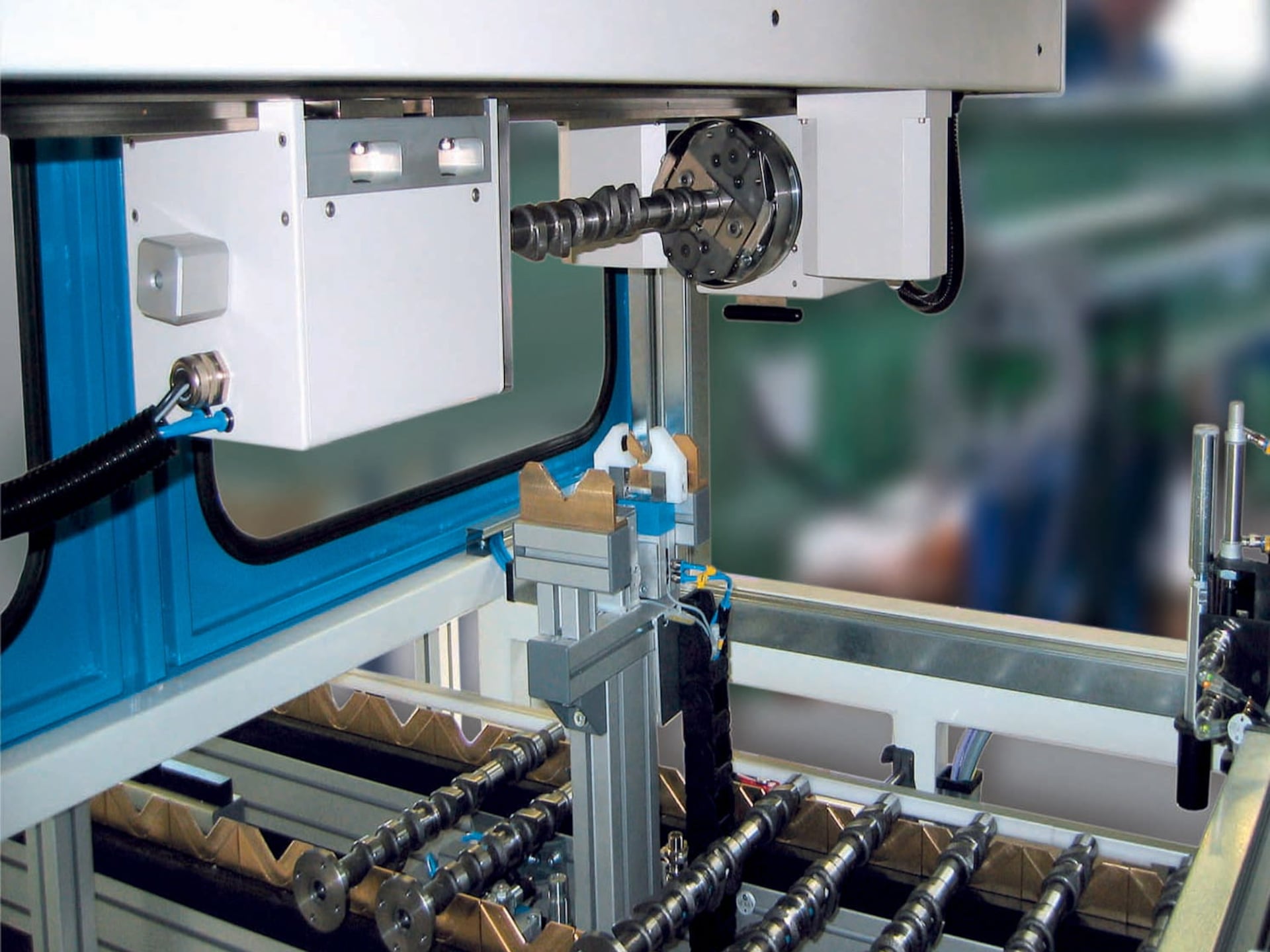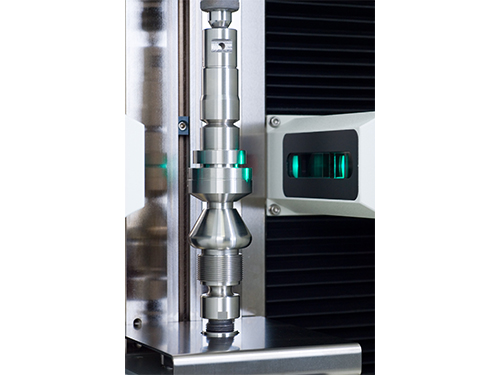The definitive guide to using optical measurement systems for contactless product inspection
The definitive guide to using optical measurement systems for contactless product inspection
Blog Article
The Role of Optical Measurement Equipments ahead of time Assessment Strategies
Optical dimension systems have transformed metrology, bringing a degree of accuracy that was once unbelievable. You may be amazed to learn exactly how these technologies, based on fundamental concepts like reflection and disturbance, are applied across various markets. Their non-contact abilities not only improve accuracy but likewise simplify procedures. As you explore further, you'll find just how these systems are forming the future of measurement and quality assurance.
The Development of Assessment: A Historic Perspective
As you discover the history of assessment, you'll find that its evolution shows humanity's pursuit for precision and standardization. From ancient people using body components as devices of measurement to the growth of standard weights and measures, each action reveals our need for precision. The Egyptians constructed the pyramids using specific dimensions, while the Romans advanced design with their advanced measuring tools.
During the Renaissance, scientific developments shifted the focus toward extra empirical methods, leading the way for contemporary assessment. The intro of the metric system in the late 18th century marked a considerable landmark, developing universal requirements. Throughout the 20th century, technological improvements even more transformed metrology, allowing very exact dimensions in various fields.
Today, width continues to advance, integrating digital innovation and automation. This history highlights not simply the relevance of measurement however additionally our unrelenting pursuit of enhancing precision and uniformity in our increasingly intricate globe.
Principles of Optical Dimension Equipments
Recognizing the principles behind optical measurement systems is important for accurate lead to assessment. You'll intend to take into account essential optical principles, dimension precision elements, and efficient system calibration strategies. Each of these components plays an essential duty in guaranteeing your measurements are accurate and reliable.
Fundamental Optical Principles
While exploring optical measurement systems, you'll experience essential optical concepts that form the foundation of exact data procurement. Light acts in predictable means, and understanding these habits-- like refraction, representation, and diffraction-- is important for effective measurements. You'll utilize lenses and mirrors to adjust light and concentrate it onto your target, ensuring accuracy in your readings. In addition, the wave nature of light enables interference patterns, which can enhance measurement resolution. Polarization can additionally play a vital role in distinct signal from noise, improving the clearness of your results. By grasping these principles, you'll be geared up to take advantage of optical modern technologies effectively, leading the way for innovations in metrology and guaranteeing your dimensions are both repeatable and reliable.
Dimension Accuracy Aspects
To attain high measurement precision in optical systems, several elements come right into play, affecting the reliability of your outcomes. Top quality lenses and detectors decrease aberrations and sound, ensuring your measurements are exact. By addressing these elements, you can improve the overall performance of your optical measurement systems, leading to even more exact and reputable results in your metrology applications.
System Calibration Techniques
Accomplishing high measurement precision is only component of the equation; proper system calibration techniques are similarly important in optical dimension systems. Next off, employ recognized dimensions to confirm the system's result and make required modifications. With these strategies, you'll enhance the dependability of your optical measurement system.
Secret Technologies Behind Optical Measurement
Optical dimension systems depend on numerous key technologies that boost accuracy and efficiency in metrology. One necessary modern technology is interferometry, which uses the disturbance of light waves to gauge little variations and surface irregularities with severe precision. You'll likewise locate laser scanning systems, which catch comprehensive 3D information of items promptly, making them very useful for dimensional analysis.
Additionally, CCD and CMOS sensors play a significant function in transforming light into electric signals, permitting high-resolution imaging and exact dimensions. Advanced algorithms for photo processing even more improve dimension accuracy by analyzing information in real time, straining noise and boosting attributes.
Lastly, fiber optics provide adaptability and the capability to determine in challenging settings while maintaining signal honesty. By leveraging these innovations, you can attain remarkable outcomes in your assessment tasks, guaranteeing that your dimensions are both exact and dependable.
Applications of Optical Measurement in Sector
As industries significantly require accuracy and effectiveness, the applications of optical measurement systems have become crucial across various markets. In manufacturing, these systems help you check measurements and resistances in real-time, guaranteeing quality control without lengthy hand-operated checks. In the auto industry, optical dimensions help in lining up elements with precision, enhancing security and efficiency.
In electronics, you're utilizing optical techniques to examine min functions on circuit boards, discovering defects that can bring about failures. The aerospace industry gain from non-destructive testing techniques, enabling you to assess products and elements without jeopardizing their integrity.
Optical measurement additionally plays a crucial duty in fabrics, guaranteeing material measurements satisfy specific requirements. optical measurement. With their original site capacity to supply high-resolution data promptly, these systems encourage you to make enlightened choices, improve procedures, and eventually drive development throughout your market
Enhancing Accuracy and Efficiency in Measurements
When you believe about improving precision in measurements, accuracy in your measurement strategies is vital. By improving these procedures, you can accomplish quicker results without giving up high quality. Let's check out just how taking on sophisticated optical measurement systems can raise both precision and effectiveness in your job.
Precision in Dimension Techniques
Accuracy in dimension strategies is crucial for accomplishing reliable outcomes in assessment, particularly since tiny inconsistencies can lead to considerable mistakes. By using innovative optical measurement systems, you can improve the precision of your dimensions. In enhancement, exact measurements enable you to preserve top quality control, guaranteeing that items meet stringent specs.
Simplifying Dimension Procedures
To improve precision and effectiveness in measurements, streamlining your measurement processes is vital. Begin by adopting optical dimension systems that offer real-time information, lowering the time invested in manual recording. These systems typically integrate perfectly with existing software program, enabling you to automate information collection and evaluation.
Following, systematize your dimension protocols. By applying consistent treatments, you minimize irregularity and enhance repeatability. Do not neglect to on a regular basis calibrate your equipment to guarantee its precision.

The Effect of Optical Measurement on R & D
As researchers undertaking to press the borders of advancement, optical dimension systems have ended up get redirected here being important tools in the advancement procedure. These systems give you with precise, real-time data that improves your ability to analyze complicated products and frameworks. In various fields, from biotechnology to aerospace, you depend on optical measurements to optimize layouts and enhance product performance.

With high-resolution imaging and non-contact techniques, you can minimize example disturbance, enabling more exact outcomes. This capability to capture minute details increases your R&D cycle, letting you repeat layouts promptly and efficiently. Additionally, optical measurement fosters cooperation throughout self-controls, as the information produced is usually quickly interpretable and shareable.
Eventually, incorporating optical dimension systems into your research not just enhances performance however likewise deepens your understanding of the sensations click reference you study. By leveraging these innovative techniques, you're better furnished to innovate and remain ahead in a competitive landscape.
Future Fads in Optical Measurement Equipments
With the quick improvement of innovation, you're most likely to see considerable shifts in optical dimension systems that will redefine their application across numerous sectors. You'll observe a move towards boosted automation and assimilation of fabricated knowledge, enabling real-time information evaluation and boosted accuracy. Miniaturization is an additional pattern; small devices will certainly enable dimensions in tighter areas, making them perfect for fields like aerospace and biomedical applications.
Anticipate to see systems that can run in tough environments, providing reliable dimensions in severe problems. As these technologies converge, you'll find that optical dimension systems not only enhance precision however additionally improve workflows, eventually driving development and efficiency in your jobs.
Frequently Asked Concerns
How Do Optical Measurement Equipments Contrast to Typical Measurement Techniques?
Optical dimension systems provide greater precision and faster outcomes compared to traditional techniques. You'll find they record even more information factors accurately, decreasing human mistake and raising dependability, making them a preferred selection in numerous applications.
What Industries Advantage Most From Optical Dimension Equipments?
You'll discover markets such as aerospace, auto, and electronics profit most from optical measurement systems. These industries count on exact dimensions to assure top quality and efficiency, improving efficiency and reducing prices via innovative modern technology.

Are Optical Dimension Equipments Expensive to Execute?
Optical dimension systems can be costly to apply, yet their precision and performance commonly justify the price. Buying such technology can result in considerable long-term cost savings and enhancements in high quality across different applications.
What Skills Are Needed to Operate Optical Measurement Systems?
To run optical dimension systems, you'll require solid logical skills, interest to information, and proficiency in software devices. Experience with optics and an understanding of dimension concepts will certainly likewise enhance your effectiveness and performance.
Exactly How Do Environmental Variables Affect Optical Measurements?
Ecological variables like humidity, temperature, and air high quality can misshape optical measurements. You'll discover variants in precision due to light interference or refraction. optical measurement systems. Preserving secure conditions is vital for dependable and accurate optical measurement results
Conclusion
In summary, optical dimension systems are reinventing width by providing unrivaled precision and effectiveness. As you discover future patterns, you'll see how the integration of AI and automation will continue to elevate measurement methods, driving advancement and improving high quality control.
Achieving high dimension precision is only component of the formula; correct system calibration techniques are similarly important in optical measurement systems.When you think about improving precision in dimensions, accuracy in your measurement techniques is necessary. By making use of innovative optical dimension systems, you can improve the precision of your dimensions.To enhance accuracy and performance in measurements, simplifying your measurement processes is necessary. Just How Do Optical Measurement Solutions Contrast to Conventional Measurement Techniques?
Report this page